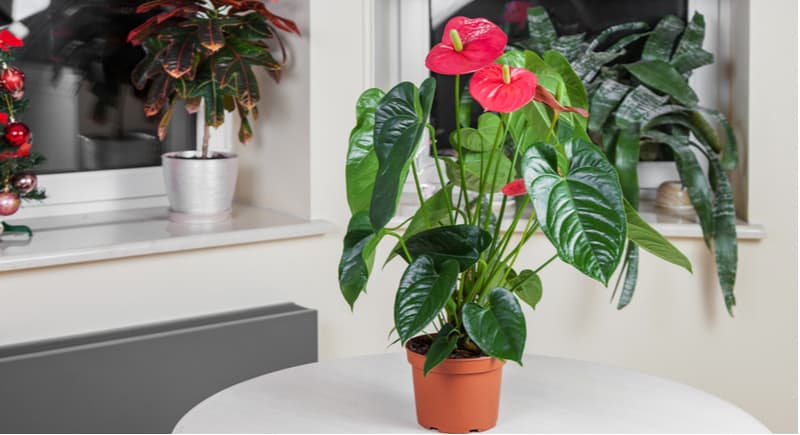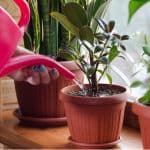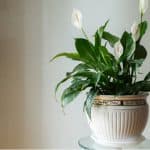Last updated on March 14th, 2022
Our site is reader supported, this means we may earn a small commission from Amazon and other affiliates when you buy through links on our site.
There are many plants you can integrate into your home, but some of the better plants to have include plants that clean the air for a healthy home environment. When you include any of these in your home it helps to purify the air, making it easier to breathe and better to sleep.
NASA recently did a study on airborne toxins, dust and germs and what most people don’t realise is that many are found in common household products and furniture. These can be the cause of many health problems, however, you can combat this by including some of the plants we show below into your home. We start off with one plant that NASA list as one of the best air purifying plants the Spathiphhyllum, commonly known as the Peace Lily.
1. Spathiphyllum – Peace Lily
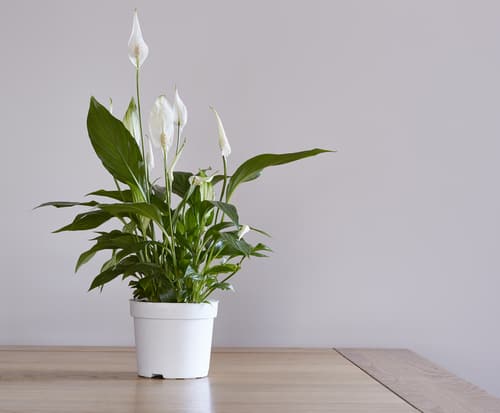
Peace lillies are not actually lillies at all, but they will naturally clean the air in your home, making them an ideal tropical plant to grow for air purification reasons. Thankfully, when grown indoors they won’t exceed 1 metre in height and do well with medium, indirect light exposure, which means they like a bright room but not to be sat directly in the window. While cleaning your air, the glossy green leaves will reveal stunning white flowers that can last up to 2 months.
This plant was actually listed on NASA’s list of “Top Ten Household Air Cleaning Plants“. It’s worth noting that they are generally pest and disease free, however, they can get aphids and spider mites, should this occur, we recommend spraying with them with an insecticidal spray at first signs.
2. Chlorophytum comosum – Spider Plant
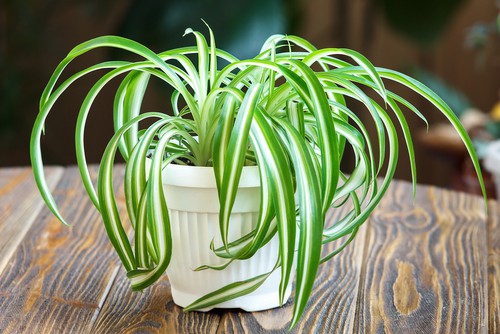
The spider plant is probably one of the oldest variety of houseplant to be used indoors. A native of South Africa, it is a very common houseplant because it’s so easy to grow and care for. Many beginners cultivate these because of how tolerant they are, but more importantly, they will clean the air you breathe. These plants grow long leaves and that are a mixture of white/yellow striped centres with rich green borders. The thickness of the green border can vary as the leaves mature, giving it a wonderful two-toned appearance.
3. Ficus elastic – Rubber Plant
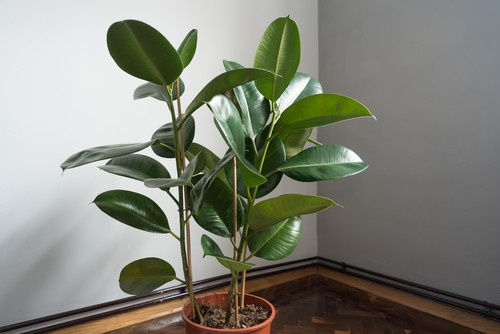
The rubber plant is a wonderful plant of rich green colours a is another very popular houseplant, and one that you can take cuttings from using the water in a jar method. We have written a guide on this method here. Known for producing rubber from its sap, you can grow a plant in your home without the worry of sticky sap for at least 7 years. These are so hardy that they will last one hundred years or more (in nature) so they are long-lasting plants that can grow to a substantial size.
When grown in your home they need lots of indirect light, and this means not in front of a window that gets sun all day, well-drained soil, and shouldn’t be moved from their original location once it is settled. So when you grow one in your home, be sure to find the perfect spot-ample indirect light and limited fluctuations in air or temperature so that the plant can settle in. The toxins they are known to remove are xylene, benzene, formaldehyde and trichloroethylene.
4. Areca lutescens – Palm Tree
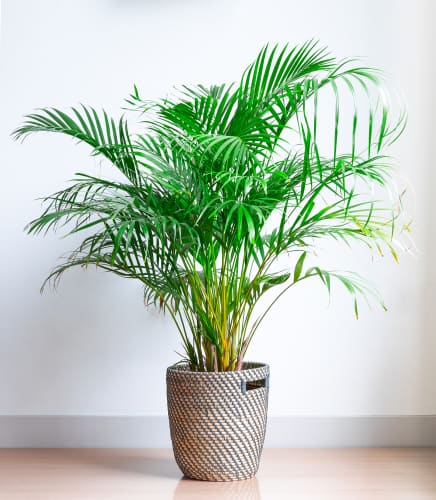
This palm tree is one of the most widely used houseplants indoors to add brightness and colour, as well as remove formaldehyde and xylene. The canes are golden yellow if given full sun, which gives them a striking look against the green foliage. The plant is generally disease-free for the most part and has been deemed one of the top 10 purifying plants by NASA. It produces feathery fronds that arch, each containing upwards of 100 leaflets are sure to demand attention.
5. Ananas comosus – Pineapple Plant
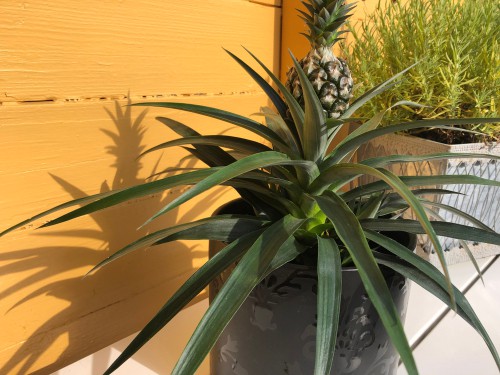
This pineapple plant gives the beautiful green, long and slender leaves of most houseplants, and they certainly will be a great talking point because they are so unusual. They can be grown effectively indoors and will give you an adorable pineapple on top, yes they do get pineapples in the UK with a little patience, however, it is not for eating. The pineapples we eat comes from specific varieties changed to give off a sweeter flavour and natural varities tend to be too bitter.
While these plants don’t actually clean the air like other plants on this list, they do produce oxygen and boost air quality at night and NASA even found that they can help reduce snoring.
6. Dracaena Deremensis – Dragon Tree
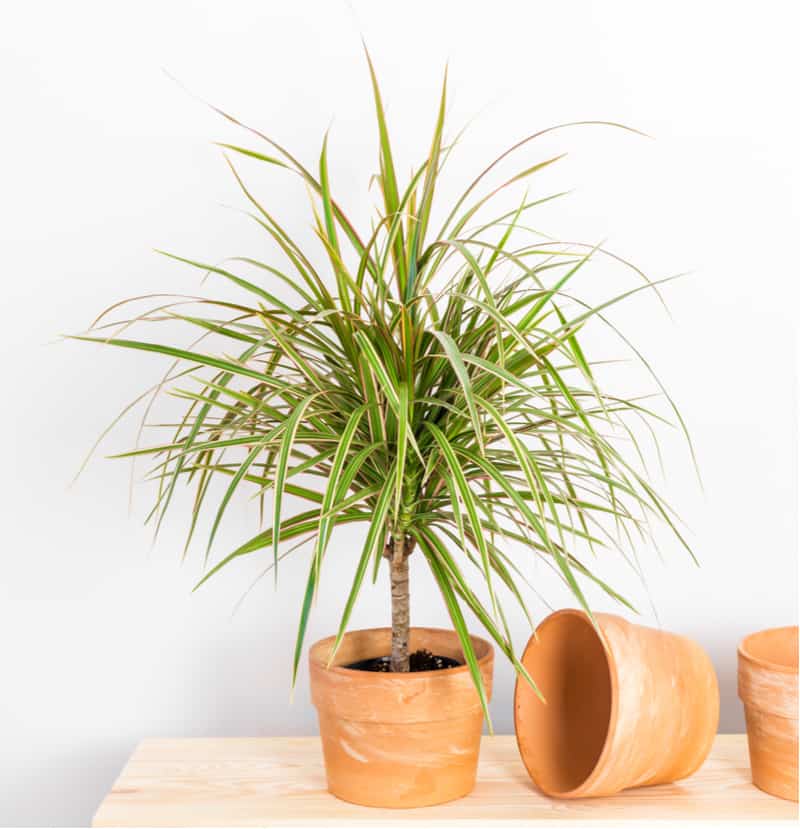
The stunning dragon tree will not take up a lot of space in density, but it can grow up to 2 metres in height if allowed, and it is believed to remove toxins including xylene, trichloroethylene and formaldehyde.
The leaves grow in large, thin strips of green that branch out of a single stem. You can keep them in your home in small pots and they will remain small, however, you can also get larger varieties that grow as tall as 15ft. It is a wonderful way to keep your air clean, but if you have dogs or cats be advised that it is toxic to them if eaten.
7. Ficus benjamina – Weeping Fig
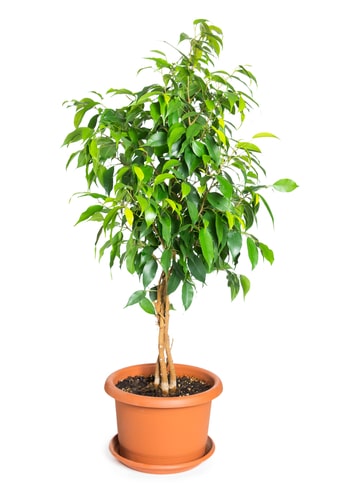
The weeping fig is a popular houseplant for homes and offices alike and is another plant that was featured on NASA’s list of air-purifying plants. The dark green foliage grows in an elegant and dense shape. The slender branches take on an arching appearance that reveals the trunk underneath.
It is an evergreen perennial that requires rich and fast-draining soil. The pH levels can be acidic to neutral so any houseplant compost would be perfect. It needs filtering, bright sun. As long as it gets regular, optimum conditions you can enjoy the purification the ficus has to offer. You will know when it is stressed, however, because the leaves will start to shed prematurely. It likes a good drink once a week allowing the soil to dry before watering again.
8. Sansevaria – Mother in Laws Tongue
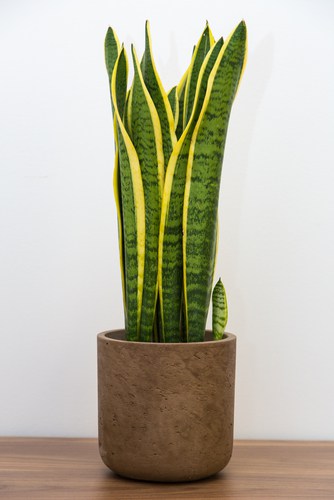
This plant is popular as a houseplant, not just because of its air purification qualities, but because of how easy it is to grow, which is why it’s often seen in office buildings. You can grow many sizes in all aspects of your home, keeping one in each room if you so choose. Moreover, they are used by NASA for air purification. These plants have been shown to remove benzene and formaldehyde from the air.
9. Aloe Vera
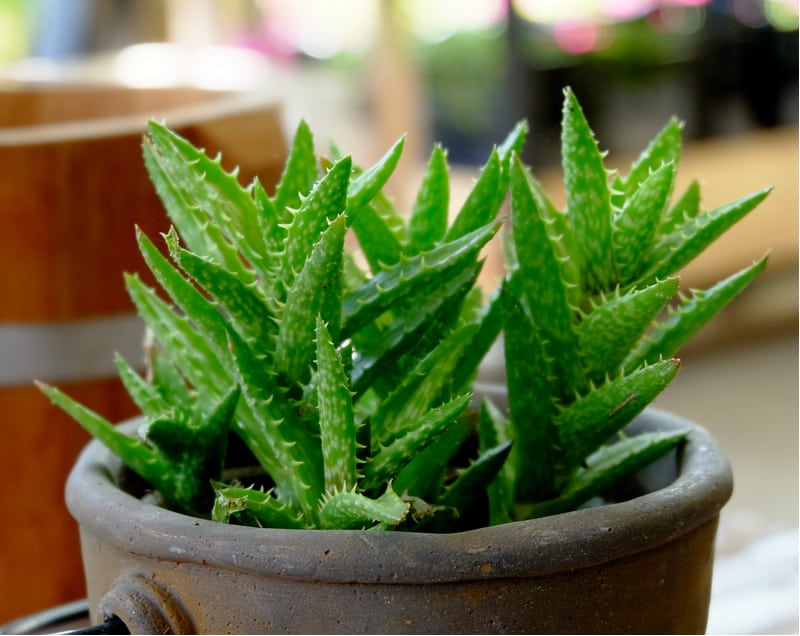
Aloe vera is a succulent that you can grow indoors to help purify your air and is often associated with helping relieve sunburn and wounds. The long stems of the plant take on the thick spikes of common succulents and bring a calming green, dashed with cream at times, to your home. They do best in dry conditions, with access to direct light so be sure to put them in windows that get regular sunlight throughout the day if you want them to thrive.
10. Anthurium andraeanum
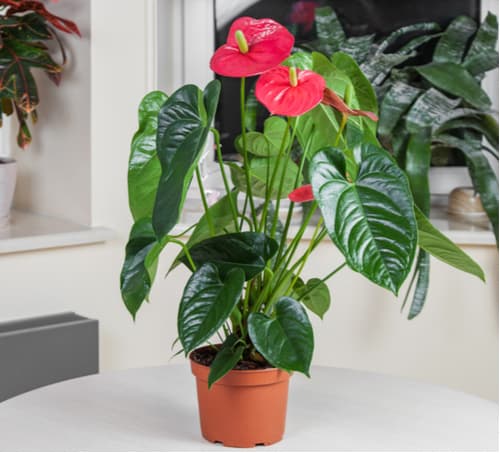
These stunning plants do quite well indoors as long as you give them the right conditions because they really don’t like the cold. One of many air-purifying plants, they need indirect, bright light. They can be put in shadier areas, however, you won’t get as many flowers. They should not be placed near a radiator though, which is worth noting. If you love it warm in your home, these plants will too and the flowers are spectacular. They prefer temperatures around 20 degrees and nothing below 16 degrees, and usually do well in humid environments, such as a bathroom or kitchen.
With the right care and some food, they will produce new flowers all year round, but most of the time you get three months of flowers, three months of rest, and repeat. The shinier the leaves, the happier they are and the purer your air will be because they remove Formaldehyde, Ammonia, Xylene and Toluene.

